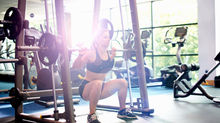It's all in the hips!
- Rachael Tibbs
- May 31, 2015
- 3 min read

Despite many hours on the driving range, are you struggling to control a lateral sway or slide in your swing? Or do you find when you rotate on your backswing your whole body seems to want to move together? Frustration can easily set in with your game and you look for numerous answers on how to correct these swing faults. But have you ever considered how well you move your hips and pelvis?
Hip rotation is crucial in the golf swing. Without sufficient mobility in your hips you are unable to coil and load on your trail leg on your backswing and will also struggle to post onto your lead leg in the downswing. Both of which are fundamentals to a consistent, stable and powerful golf swing.
Sufficient rotation of the pelvis is also important for sequencing of the downswing and good separation of the upper and lower body. But to be able to rotate your pelvis you require good mobility of the hips, pelvis and spine and good thoracic stability.

Many golfers who suffer with postural issues such as lordosis , an ‘S’ curvature of the lower spine, myofascial restrictions and tightness in the thorax and spine, and limited hip mobility will also find that they have limited pelvic rotation.
A lack of rotational mobility in the pelvis can lead to more lateral movements which may transfer into the golf swing by way of a sway or slide. When a golfer sways they are not creating a stable platform on their backswing which will ultimately lead to a loss of power and out of sequence golf swing. Likewise with a lateral slide, this will also lead to a loss of power on the downswing as there is no stability in the lower body to allow the upper body to accelerate. Potentially then you could be losing a lot of yards and distance due to this lateral movement.
Reduced pelvic rotation can also lead to a loss of posture throughout the swing due to the inability to rotate around the spine. The inability to maintain a stable posture throughout the swing can lead to timing and balance issues, which will ultimately lead to inconsistent ball striking.
Early extension of the hips and spine can also occur which results in the pelvis moving closer to the ball and the golfer standing up. This doesn’t allow for the arms to come back through to the ball at impact correctly and will often result in a shot compensated by the hands in the form of a block or hook.
Possibly the worst potential outcome for a golfer with limited hip and pelvic rotation is back pain and stiffness. Many golfers who are unable to internally rotate on their trail leg in the backswing will struggle to stabilise their lower body which can result in a backward bend and reverse spine angle. This puts an excessive load on the lower back which can cause stiffness and potentially result in injury and pain.

If you feel that you do struggle with hip and pelvis mobility and you identify closely with any of the aforementioned swing characteristics then fear not, there are many ways that you can improve and remove these limitations. Unless you suffer with degenerative hip diseases, your limitations can be remedied through specific exercises that mobilise the hip joint and pelvis.
For more information on hip and pelvic mobility or if you would like to arrange a TPI physical screening where we can test your full body function, please contact me on rachael@dymamic-golf.co.uk.
Alternatively you can visit our website www.dynamic-golf.co.uk, and you can also find us on Twitter @dynamic_golf and facebook dynamicgolfuk.









































Comments